Generalization
Generalization: Ability to Apply what was learned during Training to new (Test) Data
Reasons for bad generalization
- Overfitting/Overtraining (trained too long)
- Too little training material
- Too many Parameters (weights) or inappropriate network architecture error
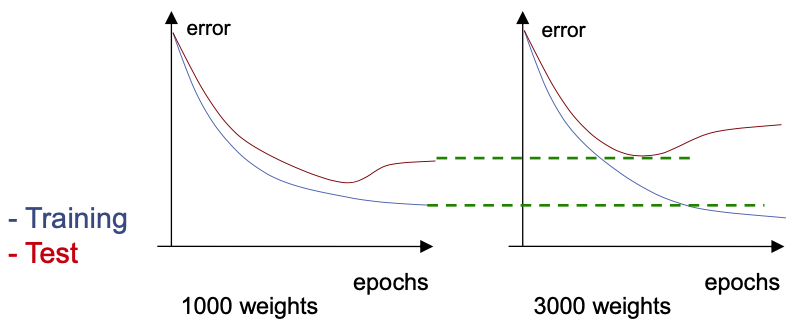
Prevent Overfitting
- The obviously best approach: Collect More Data! 💪
- If Data is Limited
- Simplest Method for Best Generalization: Early Stopping
- Optimize Parameters/Arcitecture
- Architectural Learning
- Choose Best Architecture by Repeated Experimentation on Cross Validation Set
- Reduce Architecture Starting from Large
- Grow Architecture Starting from Small
Destructive Methods
Reduce Complexity of Network through Regularization
Weight Decay
Weight Elimination
Optimal Brain Surgeon
Optimal Brain Damage
- 💡Idea: Certain connections are removed from the network to reduce complexity and to avoide overfitting
- Remove those connections that have the least effect on the Error (MSE, ..), i.e. are the least important.
- But this is time consuming (difficult) 🤪
Constructive Methods
Iteratively Increasing/Growing a Network (construktive) starting from a very small one
- Cascade Correlation
- Meiosis Netzwerke
- ASO (Automativ Structure Optimization)
Cascade Correlation
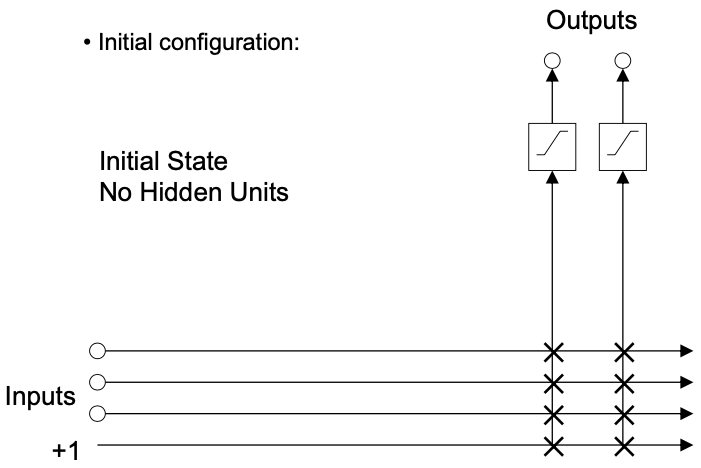
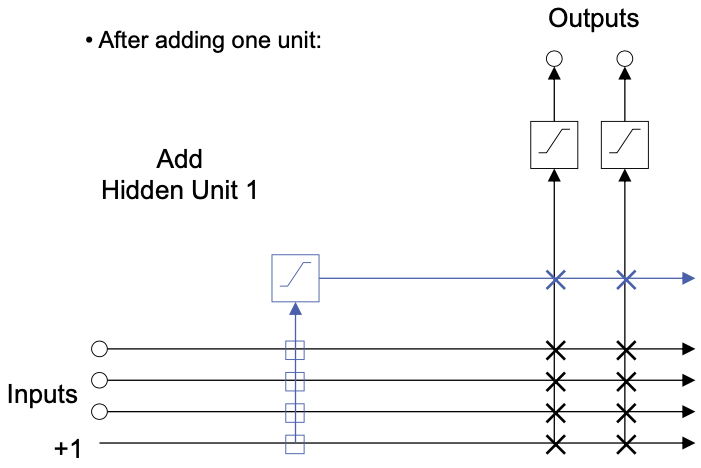
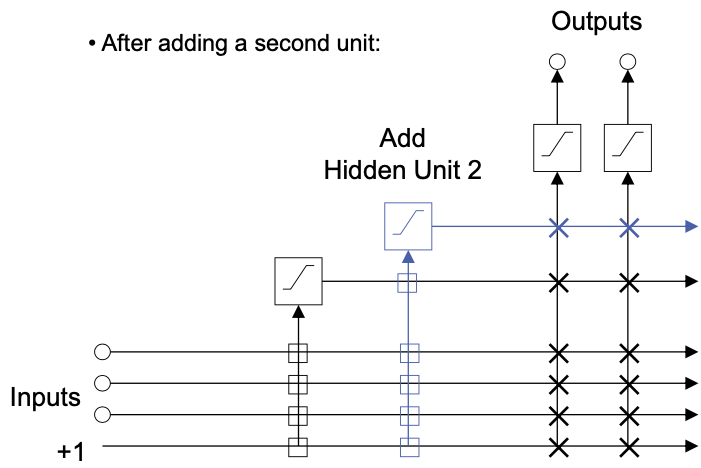
Adding a hidden unit
- Input connections from all input units and from all already existing hidden units
- First only these connections are adapted
- Maximize the correlation between the activation of the candidate units and the residual error of the net
Not necessary to determine the number of hidden units empirically
Can produce deep networks without dramatic slowdown (bottom up, constructive learning)
At each point only one layer of connections is trained
Learning is fast
Learning is incremental
Dropout
Popular and very effective method for generalization
💡Idea
- Randomly drop out (zero) hidden units and input features during training
- Prevents feature co-adaptation
Illustration
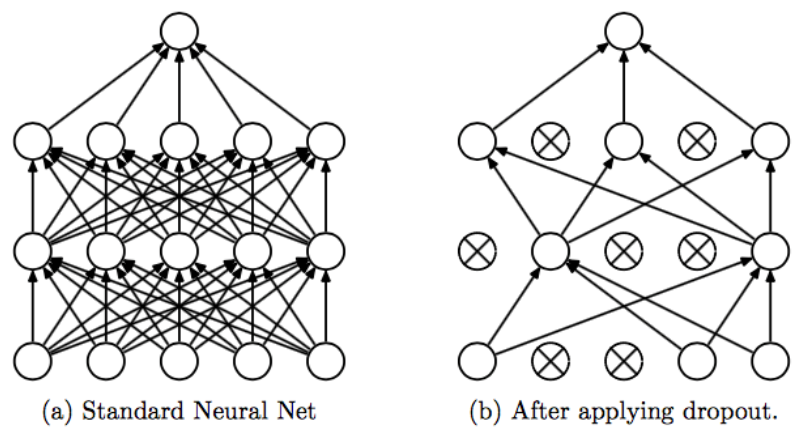
Dropout training & test
